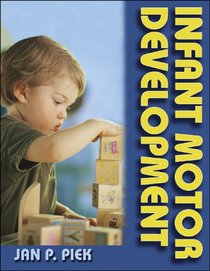Search -
Infant Motor Development
Infant Motor Development
Author:
Infant Motor Development is the first text to concentrate on motor development during infancy‚?"the stage in which the greatest qualitative changes in the life span occur. It is an excellent introduction to the most relevant and common issues researchers, clinicians, and parents face. This groundbreaking text combines theory with application to... more »
Author:
Infant Motor Development is the first text to concentrate on motor development during infancy‚?"the stage in which the greatest qualitative changes in the life span occur. It is an excellent introduction to the most relevant and common issues researchers, clinicians, and parents face. This groundbreaking text combines theory with application to... more »
ISBN-13: 9780736002264
ISBN-10: 073600226X
Pages: 322
Edition: 1
Rating: ?
ISBN-10: 073600226X
Pages: 322
Edition: 1
Rating: ?
0 stars, based on 0 rating
Publisher: Human Kinetics Publishers
Book Type: Hardcover
Members Wishing: 1
Reviews: Amazon | Write a Review
Book Type: Hardcover
Members Wishing: 1
Reviews: Amazon | Write a Review
Genres:
- Health, Fitness & Dieting >> Psychology & Counseling >> Child Psychology >> Development
- Health, Fitness & Dieting >> Psychology & Counseling >> Neuropsychology
- Health, Fitness & Dieting >> Psychology & Counseling >> General
- Health, Fitness & Dieting >> General
- Medicine >> Specialties >> Pediatrics >> General
- Medicine >> Specialties >> Sports Medicine
- Medicine >> Internal Medicine >> Neurology >> General
- Medical Books >> Medicine >> Internal Medicine >> Neurology




